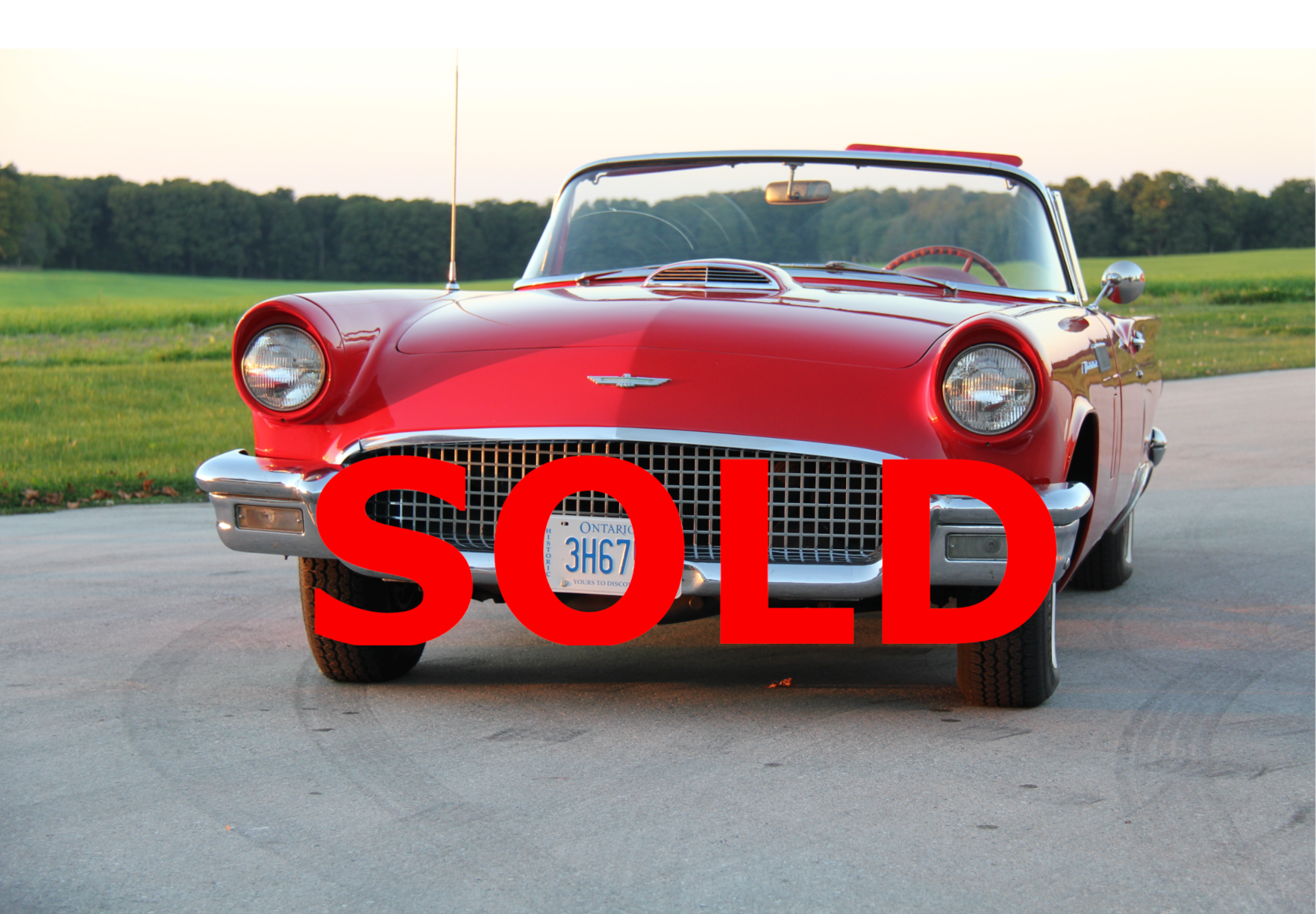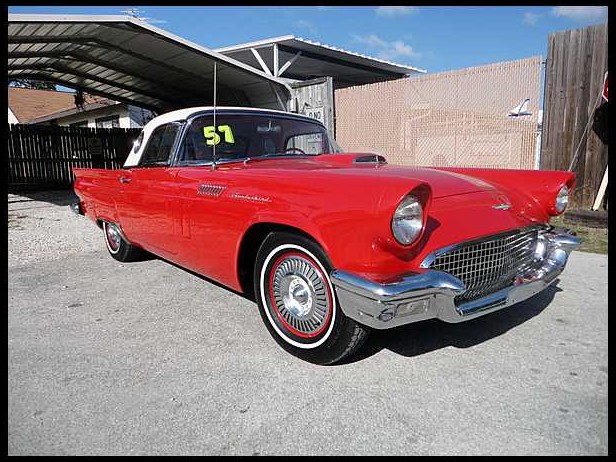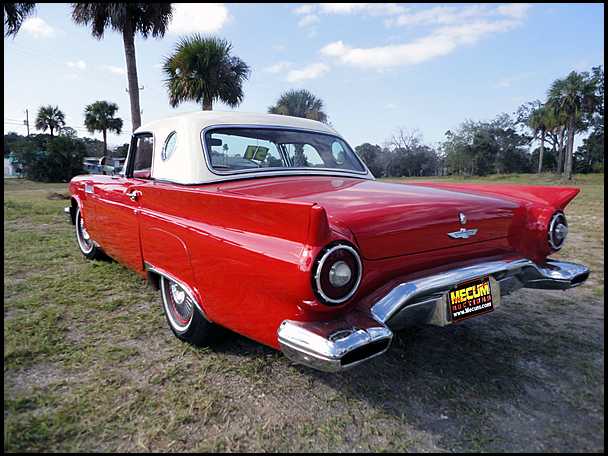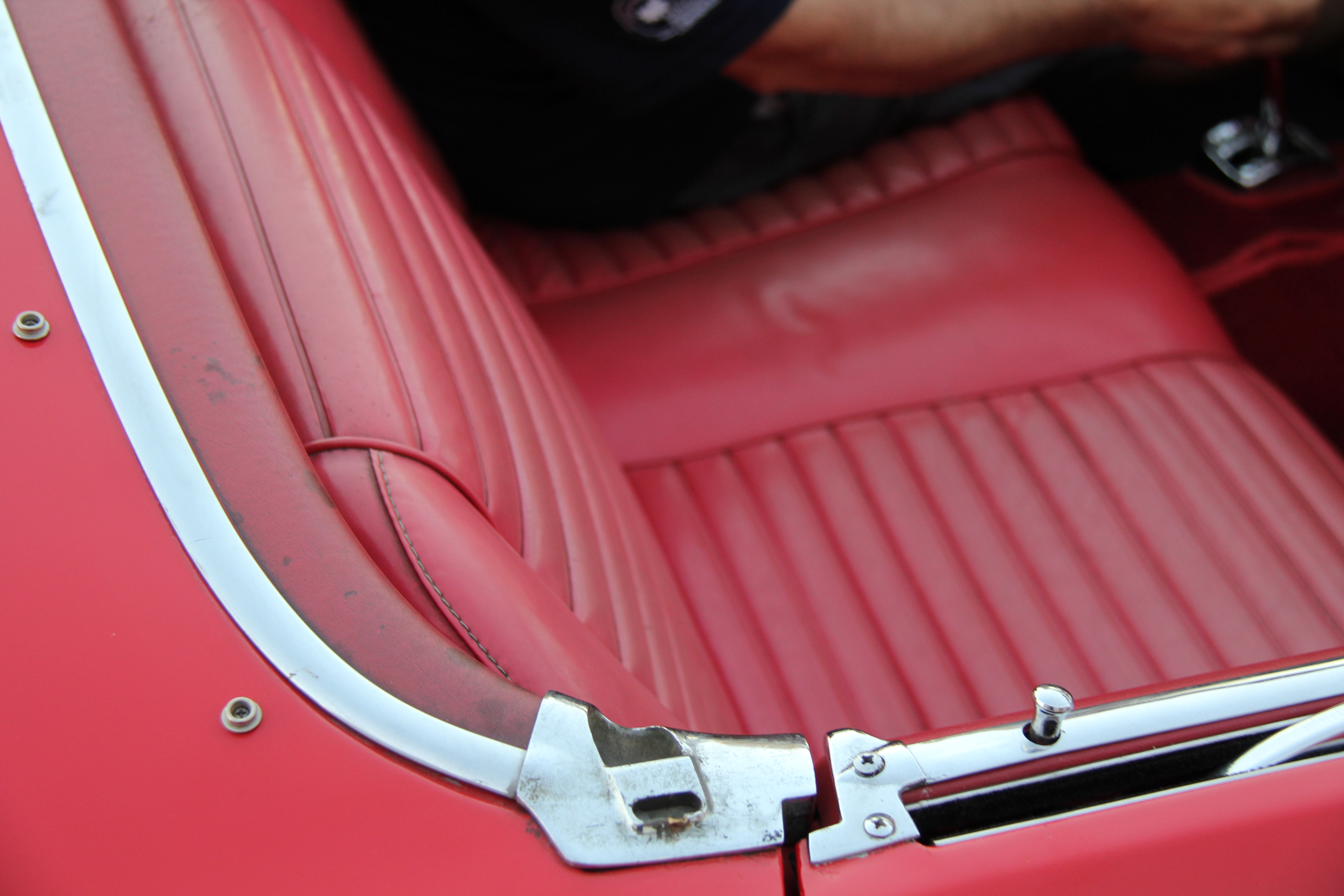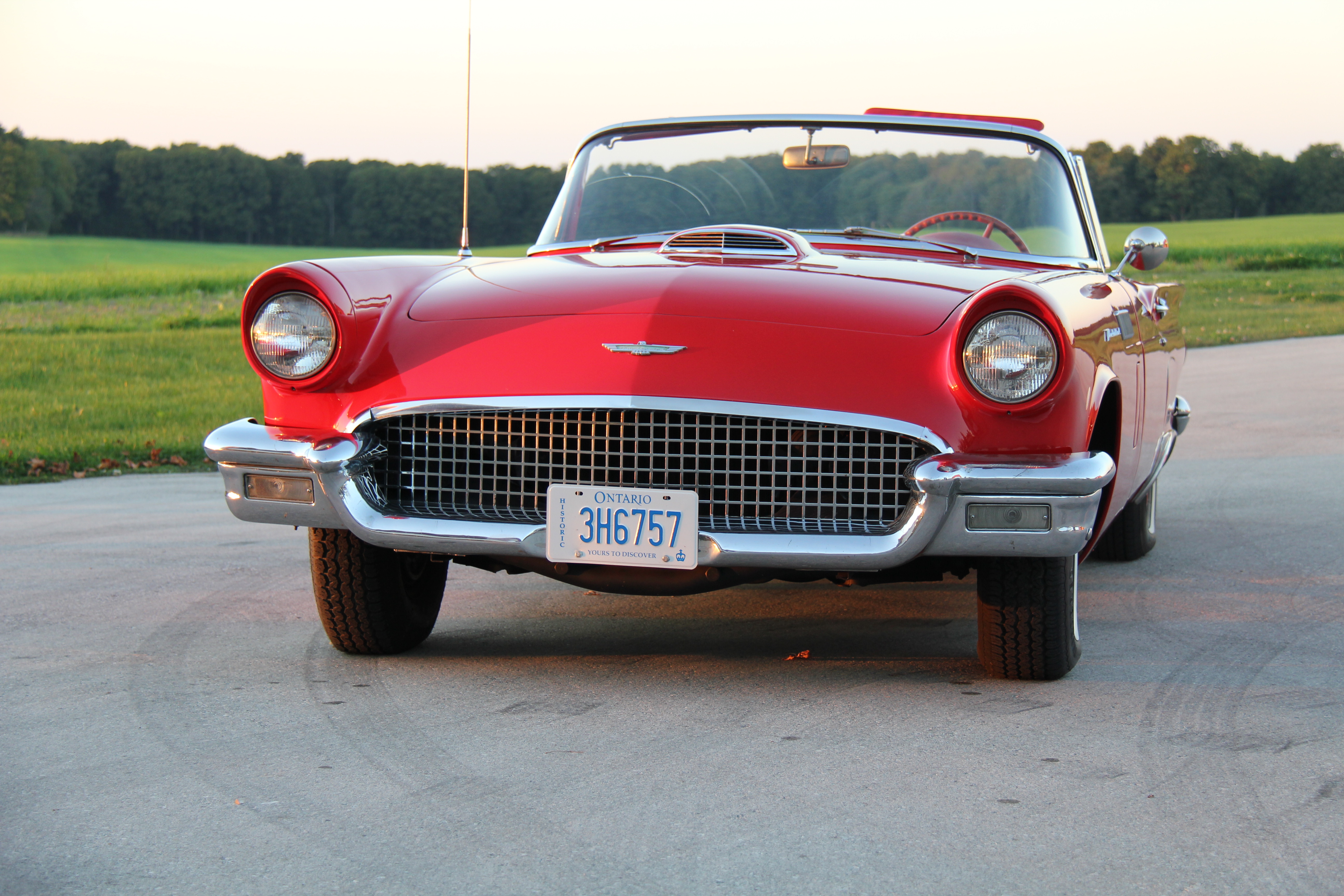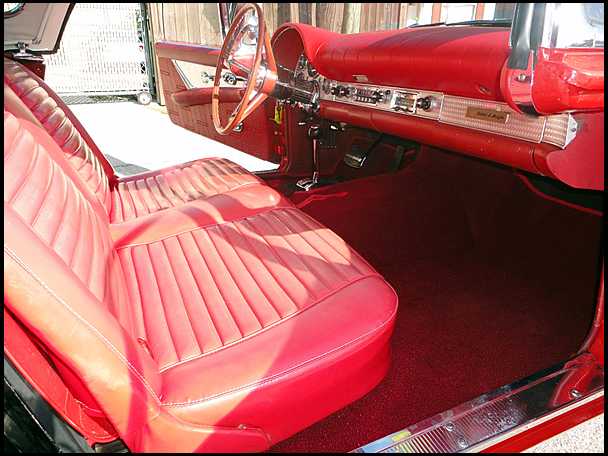1957 TBIRD NO 24
The Ford Thunderbird was manufactured by Ford in the United States over eleven model generations from 1955 through 2005. Unlike the Chevrolet Corvette, it was not marketed as a sports car. Ford positioned the Thunderbird as an upscale model and is credited in developing a new market segment, the personal Luxury Car.
Engine: 312 cu in (5.1 L) V8 245 HP (183 kW) Power Steering, Power Brakes
This car is a Florida car and has:
Both tops Power windows Power seat
Factory radio Solid, straight, rust free body
The Thunderbird was revised for 1957 with a reshaped front bumper, a larger grille and tailfins, and larger tail lamps. The instrument panel was heavily re-styled with round gauges in a single pod, and the rear of the car was lengthened, allowing the spare tire to be positioned back in the trunk.
Sales for the 1957 T-Bird, the last of the First Generation T-Bird was highest yet at 21, 280 units.
Basic Rules for Judging a Car Show
Many of the historic vehicles found in the Lang Collection are often requested to be entered in various collector car shows. We are often asked how these shows are judged. Below is an example of some of the rules and considerations used in these shows. A rule can be very basic, as detailed below, or more intense as detailed by individual clubs.
Basic Rules of Judging:
1. Judges do not touch the cars. If they feel the need to have a door, hood or trunk opened they should politely ask the owner/exhibitor to open the vehicle;
2. Judges should be very careful not to allow any part of their clothing or gear to touch the car as they are leaning over them for inspection;
3. Know the vehicle you are judging; what should be there, what original parts should look like, do not deduct points for what you think is incorrect;
4. Do not interact with the owner/exhibitor while judging, except to have a door, trunk or hood opened;
5. Do not eat or drink while judging, or near the show vehicles;
6. Never smoke around the cars;
7. Be consistent in valuations;
8. Be prepared to explain your evaluation;
9. You should not judge the same category in which you are entered;
10. Consider the category for which you are judging: ‘Original/Unrestored’ vehicles will have wear, dings and faded paint; ‘Restored to Original’ vehicles should appear as if they are in ‘show room condition’; ‘Modified’ cars should be judged on fit and finish – without making judgment on whether you like the choices they made; ‘Rat Rods’ are the hardest category to judge because they are intentionally made to look old, used and worn, all with an individual style.
- In any category the vehicle should be clean and presented to its best possible appearance.
What to consider when judging:
(Most judging is done on a scale of 1 to 10, with 1 being the lowest and 10 being the highest.)
A. Original/Unrestored’ or ‘Restored to Original’ – are the parts original or like original? (Sometimes you can’t find a true original part available.)
B. What is the condition of the body? (Dents, scratches, dings, rust and alignment of body panels)
C. Is the vehicle clean? (Body, engine, wheel wells, door jams, door sills, and interior).
D. Is the interior worn, ripped, tattered or soiled?
E. Are the heater vents clean and operable?
F. Does the clock work?
G. If the judging is true Concours Judging, cars are judged on a “Standard of Perfection”, following rules and points standards set out by the sponsoring club or organization. The autos entered in Concours competition are judged against a point sheet versus against other entrants. Considerations within Concours Judging may also include: ‘Trailered/Towed’ is the most critical category for judging – these cars are expected to be pristine; ‘Driven From Home’ where more allowance is made for the condition of the undercarriage, exhaust, tires, shocks, batteries, undercoating and “road rash” (rock dings); ‘Stock Street’ in which cars driven frequently so the undercarriage is generally not detailed. Cars in the ‘Stock Street’ category are judged for authenticity, quality of workmanship, cleanliness and overall condition; ‘Daily Driver’ is the least harshly judged category. Cars are judged for condition and cleanliness only.
https://scottiesgarage.wordpress.com/2009/10/15/the-basic-rules-for-judging-a-car-show/

